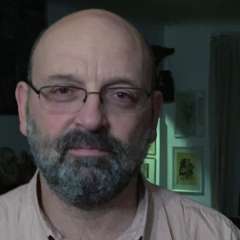One of Susanna Mälkki’s biggest claims to glory has been her unabated interest in promoting contemporary music, a constant of her career at least since her appointment in 2006 as music director of the Ensemble Intercontemporain. Her programming of a new composition has never meant bowing to the requirements of the day but has always been the result of firm convictions about the intrinsic value of such a deed. At the helm of the New York Philharmonic, she flanked a local premiere by Felipe Lara with an outstanding pair of 20th-century works.
In Ives’ The Unanswered Question, Mälkki masterly segregated the three strata – the strings’ calm pianissimo, the trumpet-intoned “perennial question of existence” and the flutes’ futile quest for an answer – while imbuing the overall collage with a sense of mystery and Baudelairean spleen. Nevertheless, I’m not convinced that leaving just the strings on the podium, placing principal trumpet Chris Martin towards the rear of the parterre and the flutes in the second balcony truly enhanced the acoustical aura of this eerie composition.
The centerpiece of Wednesday night’s performance was Felipe Lara’s Double Concerto, a 2019 work jointly commissioned by Helsinki and Los Angeles Philharmonic Orchestras. Written specifically for flutist Claire Chase and jazz bassist and singer esperanza spalding, relying on their different experiences and backgrounds, the work’s goal has been, in the composer’s words “to (re)interpret the orchestral double concerto genre in the form a performer-specific work exploring aspects of oral, improvisational, written and electroacoustic musical traditions”.
The amplified solo contributions are complex indeed. Exploiting the vocal connotations of wind instruments, the score asks Chase to alternate between flute and contrabass flute in C, alto flute in G and glissando head joint. She produced an amazing array of sounds, many of them onomatopoeic.
Spalding started with vocalises, taking up her double bass at a later point. Barely distinguishable fragments of texts recited in Brazilian Portuguese, which the composer found in an old diary, were another ingredient of the 30-minute score. An orchestra with two string sections tuned a quarter tone apart and a wealth of wind and percussion instruments was alternately in dialogue with the soloists or following its own path.
In Mälkki’s calm and precise hands, chamber music-like and pandemonium-evoking sections blended well. Gradually allowed to display more and more improvisatory skills, the two protagonists conversed with ease, their exchanges culminating in a jam-session-like cadenza that occasionally felt a tad longish. Of course, one might wonder how well this outstandingly original composition will survive in the repertoire without the involvement of its dedicatees, but the question didn’t take anything away from enjoying the multitude of colours and textures of this experiment.
With its simplified meters and rhythms and its changes in instrumentation, the 1947 version of Petrushka is still a difficult score to tackle. Intending to make the music sound more like a concert work than a ballet score, Stravinsky placed greater emphasis on individual instrumental voices and the different members of the New York Phil – special mention for flutist Alison Fierst – acquitted themselves well in their extended contributions. With meticulously precise gestures, Mälkki clearly retold the puppet’s story, from Petrushka’s dreams about romance with the ballerina to his sad death, balancing lyrical and violent segments well. It was a more than accurate rendition of the score but lacked a certain level of éclat.




